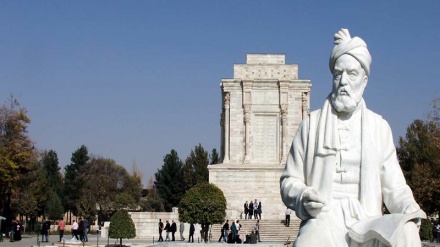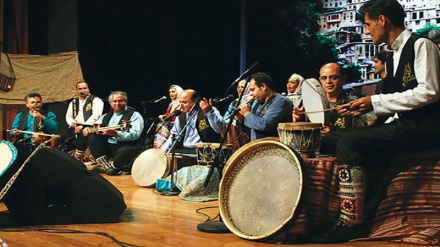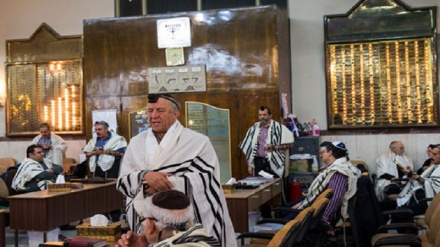Iran: Land of various ethnicities (14)
Earlier we got familiar very briefly with the traditions of different ethnicities in Gilan Province, north of Iran. This time we are going to talk more about their traditions and customs.
Gilan Province is located in the north of Iran and its capital is the city of Rasht. It lies along the Caspian Sea, west of the province of Mazandaran, east of the province of Ardebil, and north of the provinces of Zanjan and Qazvin. Some of the other cities of the province include Lahijan, Talesh, Langeroud, Rudsar, Astara and Fuman. Gilan Province is one of the most beautiful regions in the country and millions of domestic and foreign tourists and lovers of nature travel to the province every year. With an area of over 14,000 kilometers, it enjoys picturesque natural sceneries, dense forests, vast rice paddies and orchards of olive trees, habitats of birds, ponds, wetlands, rivers, coasts and rare plant species. There are various ethnic groups, languages and dialects in this province. The Gilak people are scattered in the plains of the province and are engaged in agriculture. It is said that they are the first people inhabiting in the region. The Galesh people, as a branch of the Gilak people, are mostly busy in animal husbandry and reside on the mountains and foothills. The culture of the latter ethnicity has remained very intact. The Daylami folkloric music is still alive among them. Another group is the Tat people who live mostly in the southern part of the province especially in Rudbar and the adjacent villages. They, too, have especial traditions which have been maintained since old times.
The Gilak people of Gilan province speak in Gilaki which is a branch of the ancient Pahlavi language. Galeshi is the dialect or language spoken by the Galesh people of the highlands and Tati is the language of the people of Rudbar region. However, Amarlui people of Rudbar speak in Kormanji which is a dialect of Kurdish language. Moreover, in the cities of Talesh, Astara, Rasht, Rezvanshahr and Anzali there are Azeri people who speak in Azeri language. Besides, Armenian is spoken by the Armenian minority in Rasht and Anzali.
Considering the high variety of ethnicities in Gilan province there are many traditions among these people some of which have been forgotten in the course of time.
One of the famous ceremonies is called Ayna Tokam which is held in the west of the province. The players of this ceremony called Tokamchi used to come from Azarbaijan to Hashtpar and Anzali with the tidings of Nowruz.
Tokam was a figure of goat tied to a handle and decorated with shreds of cloth and colorful beads. The handle was fixed in the hole of a stick and moved in the air. In addition, two sticks were beaten together to make a happy sound and the Tokamchi would sing happy songs.
Among other traditional games of Gilan is Bandbazi or Lafandbazi which is similar to tight-rope walking. The main acrobat performing the game- is called Pahlavan (champion). He walks on the rope barefoot. He holds a stick called Langar in his hand to keep his balance. Usually the acrobat stands inside a washtub or a big pot and walks on the rope. Sometimes he rides a bicycle that has no tire. Rarely the acrobat puts a chair in a tray and sits on it while trying to keep his balance. Below there is a buffoon called Yalanchi Pahlavan (fake champion) with ridiculous clothes who imitates the Pahlavan. This game is accompanied with music played by one or two people.
A special kind of wrestling is popular among Gilak people since old times. It is called Gilehmardi. It is performed at an enclosed square called Simbar or Sabzeh Meydan. Gilehmardi wrestling is performed during feasts and wedding ceremonies. The wrestlers first display some muscle flexing to show their power to the rival. Then they start wrestling. He whose hand touches the ground will be the loser. The winner will be rewarded with items such as cloth, mirror, shirt, sheep, cow and so on. The gift is called Baram.
The ceremony of taking the bride to the groom’s house is called Gishehbari. This ceremony is held differently in different regions of Gilan. For instance, in the east of the province the bride and groom take a sapling which has been dug out from the house of the bride’s father. Then the couple plants it in their new house. In some of the villages the bride’s mother ties the feet of a rooster to the feet of a hen with colorful ribbons and scraps. Then the rooster and the hen accompany the bride and groom so that the groom unties the birds and puts them in a nest which has been prepared beforehand.
In some parts of Gilan province bread and flour are put in a cloth and tied to the bride’s waist as a sign of bounty.
In the east of the province, especially the mountainous areas of Daylaman, the bride gives part of her dowry to Lady Fatima (Peace upon her) each time that she crosses a river or stream. In the middle of the way the groom along with two of his kinsmen welcomes the bride. These two men are called Saqdush and Soldush. At this time the groom throws an orange or an apple or a piece of sugar cube toward the bride symbolizing the seeking of bounty and blessing.
RM/ME


